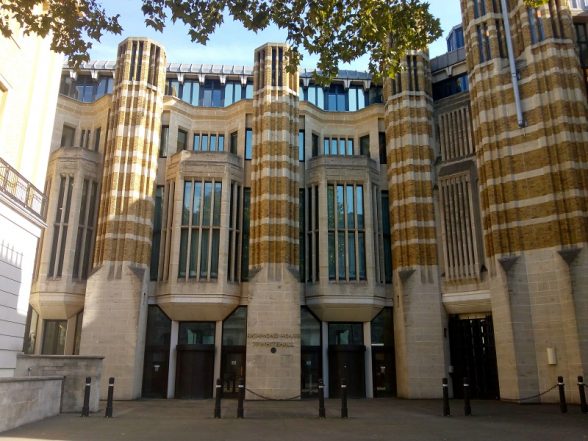This website uses cookies
This website uses cookies to enable it to function properly and to analyse how the website is used. Please click 'Close' to accept and continue using the website.



Photo: © SAVE Britain’s Heritage
We are ramping up our opposition to plans to demolish the majority of William Whitfield’s masterpiece, the Grade II* Richmond House, with the launch of a petition and are urging members of the public to show their support and sign it.
Clare Price, our Head of Casework, said: “This is a shameful waste of public money which will have a huge environmental impact as well as losing a very fine building. Please help us put a stop to this outrageous development and sign our petition and also write to Westminster City Council.”
The petition can be viewed and signed here. Letters to Westminster City Council should quote reference 19/08221/LBC.
We are objecting ‘in the strongest possible terms’ to the planning application by architects Allford Hall Monaghan Morris to build a temporary House of Commons chamber and offices in Richmond House while the Palace of Westminster undergoes a multi-billion refurbishment. The plans confirm that the majority of Richmond House will be demolished with only the Whitehall façade and the reconstructed Georgian terrace being left in tact.
The cost of the temporary chamber has now risen to £1.6 billion, with no clear plan for the use of the building once the Palace of Westminster has been refurbished. The three level basement is for a central plantroom, which carbon studies indicate will be obsolete very soon (ie; all electric buildings within a few years). Carbon emissions expert Simon Sturgis has been quoted as saying that the plans for Richmond House represented an “investment” of 16,500 cubic tonnes of carbon dioxide.
The strength of Whitfield’s Richmond House is the way he designed it to respond to its context and made sense of the Northern Estate as a whole. It is particularly strong in the way it blends both the styles of the Norman Shaw buildings and the Georgian Richmond Terrace façade. The front façade is merely a glimpse of the quality behind. The interiors are carefully crafted using high quality materials referencing both Charles Rennie Mackintosh and Lutyens, the designer of the Cenotaph opposite.
In the letter of objection to Westminster City Council, Clare writes: “The new chamber causes permanent and irredeemable damage for what is acknowledged to be a temporary use that will subsist for merely 5 to 8 years. This sort of short-term thinking is typical of commercial developers only interested in immediate profits and is unworthy of a Parliament which should be setting an example in the planning process.”
Grade II* listed buildings form only 5.5% of all listed buildings in the country and 1980s buildings of this grade are astoundingly rare, making this one of the most significant of its date in the UK.
Whitfield, who died in March aged 98, has been described as one of the most distinguished architects of his generation.

Become a C20 member today and help save our modern design heritage.